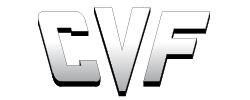Frequently Asked Questions
FREQUENTLY ASKED QUESTIONS
Below you'll find a listing of common questions we receive at CVF. If you don't see the question you have, simply give our support team a call at 651.356.8593 or send us an email.
Q. Do you include bolts with your pulley kits?
A. We include mounting bolts for the crank pulley but not for the water pump pulley. It is difficult to tell what bolt length is required on the water pump pulley because there are so many different lengths of fan spacers out there. We include the 3 bolts to hold the cap onto the alternator pulley, but not the center nut on the alternator. The center nuts usually come with the alternators and we are covering them up anyway so they don't need to look pretty.
Q. What belts do I use?
A. Our V-belt pulleys all use the Series 15 belts (except for Toyota Landcruiser Pulleys). The best way to get the right length is to cut your old belt or use a rope to measure the length with the bracket fully compressed. Most auto parts stores sell the belts in 1/2" increments.
Q. Should I order the Underdrive or High Flow Option?
A. Underdrive pulleys are designed to increase horsepower 5-10HP by slowing down the accessories. The High Flow Pulleys will increase the water pump speed to make sure you have plenty of cooling water flow. We usually recommend the high flow pulleys on street driven applications to prevent overheating and the underdrive pulleys on race-only applications to increase horsepower. If you have a good cooling system then you can safely run underdrive pulleys on the street.
Q. How do I Remove Your Press Fit Power Steering Pulleys?
A. It can be difficult to remove our pulleys without damaging them, but if you need to remove them you would use a 3 jaw puller on the cosmetic holes. Some customers have also fabricated small bars to put on the back side of the pulley to keep from marking the part during removal.
Q. Do your V-belt pulleys have "Deep" grooves?
A. All of our V-belt pulleys have standard depth grooves. We aren't big fans of deep groove pulleys because they just mask the underlying problem and deep groove pulleys will eventually show uneven wear if you don't fix the real problem first. Thrown belts are usually caused by mis-aligned pulleys or flexing brackets. Most customers check pulley alignment, but those flimsy brackets are often overlooked. When you change engine speed quickly, the load on your brackets changes too. If your brackets are flexing then this can leave slack in your belt tension and you'll send belts flying.
Q. Do you powder coat your pulleys?
A. We used to powder coat our pulleys and brackets but found that a lot of customers would scratch the surface finish during installation and then have no way to repair the surface finish. Now we offer them with a polished finish which allows you to easily remove minor scratches or anodize / powder coat them yourself if you would like.
Q. What Torque Values Should I Use?
A. Recommended Dry Torque Values:
5/16-18 SHCS: 14-16 Ft-Lbs (Chrysler Crank Pulley Bolts)
5/16-20 SHCS: 16-18 Ft-Lbs (Pontiac Crank Pulley Bolts)
3/8-16 SHCS: 27-30 Ft-Lbs (Chevy, Ford, AMC Crank Pulley Bolts)
7/16-14 SHCS: 45-50 Ft-Lbs
Q. What Ford Small Block pulleys should I order?
A. On the small block Fords, there are 3 key pieces of info to get the right parts every time:
1) Is your lower radiator hose going to be on the passenger side or driver side? This tells us if your water pump is 5.4" or 5.7" tall.
2) Do you have 3 or 4 bolt damper (or both)?
3) Is your damper factory or aftermarket? (Aftermarket 4 bolt dampers are shorter and usually require a spacer)
If you're still confused on the small block Ford applications, just shoot us an e-mail with the info above and we'll be happy to help.
Q. How do I Eliminate Belt Slippage / Squealing?
A. The most common cause of belt slippage we see is brackets that are flexing under load. Most guys know to check their belt tension and pulley alignment, but flimsy brackets are easily overlooked. When you rev the engine or accelerate rapidly, your brackets can flex and create slack in your belt system giving you that annoying high pitched squeal when you rev the engine.
Q. Should I buy a V-belt or Serpentine System?
A. V-belts are actually pretty reliable systems and were used by the OEM engineers for many years - they work fine in a lot of applications. The issue is that a lot of hot rod enthusiasts are building bigger and more powerful engines with heavy accessory loads like high-amp alternators, A/C and high-flow water pumps. This can push the limits of a typical V-belt system and you can end up with squealing belts if you go too far. We usually recommend serpentine systems on these higher horsepower applications with big accessories loads.
